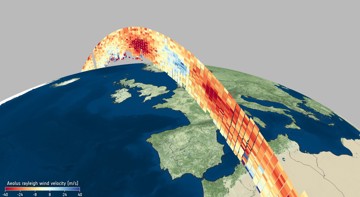Aeolus is currently orbiting 320km above Earth but, after far exceeding its design lifetime of three years, the satellite is running out of fuel. This, along with increasing solar activity, means the spacecraft will succumb to gravity and the drag of Earth’s atmosphere, causing it to descend back to Earth. ESA’s plan is to use the remaining fuel to perform a final set of manoeuvers to return the spacecraft- and any of its debris- as safely as possible – reducing even further the already minimal risk to life and infrastructure.
KSAT role will be tracking the satellite during its reentry stages. With use of our network of TT&C stations we can flexibly and on short notice respond to communication needs with the spacecraft from our ground stations at Svalbard, Troll and Inuvik.
“ We are happy to collaborate with ESA’s ESOC (European Space Operation Centre) and ESRIN (Centre for Earth Observation) to plan and conduct a safe reentry for the Aeolus satellite after nearly five years of successful operations”- says Mai-Eli Johansen, KSAT’s Director of EO Engineering.
Since its launch in 2018, KSAT has supported Aeolus mission with x-band acquisition from the Svalbard ground station and Troll station in Antarctica. Downloaded data has been processed, archived, and distributed by our experts - KSAT supported the delivery of well over 99% of Aeolus data to users in near-real time.
The mission’s success
Aeolus was tasked with a trailblazing mission: to measure global wind profiles from space using a laser. Though designed as a demonstrator, its data quickly entered operations and were used by major weather forecasting centers throughout Europe.
During its operation phase, Aeolus contributed to improving global weather models and forecasts and has been hailed as one of the most successful missions ever built and flown by ESA. It ended nominal operations in April 2023 and its successor Aeolus-2 is already in preparation.
History in the making
Currently, every year around 100 man-made space objects with combined mass of roughly 150 tons reenter Earth’s atmosphere. Despite the minimal risk posed to any populated areas, a rapidly growing satellite industry and the accompanying increase in space debris actualize the need for sustainable and safe space operations.
This type of assisted reentry has never been done before. Aeolus was not designed for a controlled reentry, but this attempt – a best possible effort that goes above and beyond for space safety - provides a template for other such satellites to follow now and in the future.
fot. ESA


